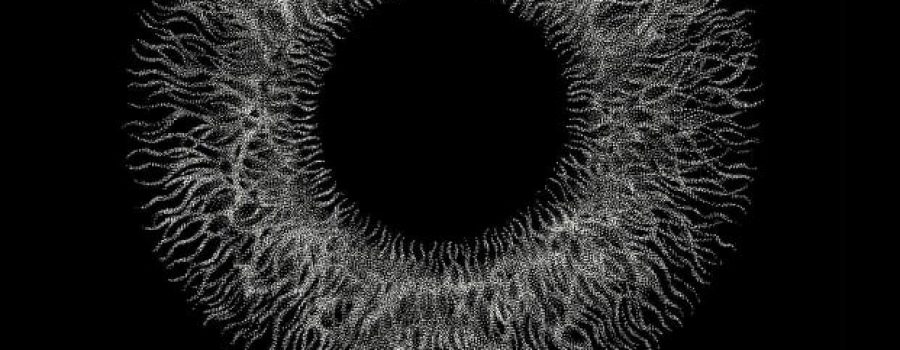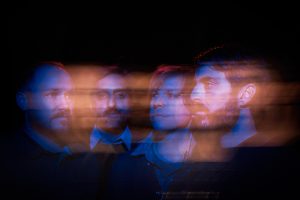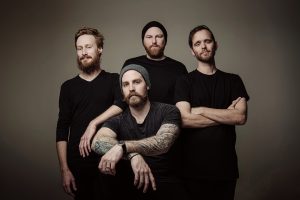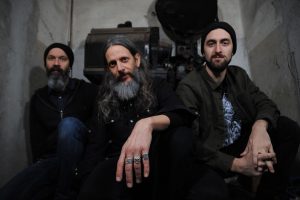To talk about Swans is no easy task. After all, how do you define a band that has been in a constant state of metamorphosis and reinvention ever since it was created? You can come up with a wide variety of synonyms to try and describe the band – powerful, abrasive, creative and challenging are all perfectly valid adjectives but none of them comes even close to what Swans is truly about. So how do you define Swans, then? The answer is somewhat simpler than you might think: you don’t. You see, a band like Swans isn’t something you can describe with words, because you can’t really define that which defies all definitions and conventions. Swans is one of those rare things in this world that has to be seen, experienced, breathed and lived to be fully understood – if such a thing is at all possible. And if you truly want to understand what Swans is and isn’t, then you have to recount the phases, the changes, the records, the people, and piece together what could be called a story. The story of Swans.
“Michael is not a fearless person, but he is a fearless artist.” – Thor Harris
The story begins not with the band itself, but with its mentor and creator, Michael Gira, a man of unparalleled talent. From a young age, Michael felt independent and debased from society, a result of leading a relatively poor life in the slums of New York. These conditions instilled into him a sense of aggression and rage that he started to tap into after the dissolution of his previous band, Circus Mort, a psychedelic post-punk outfit. Calling his new project Swans, Michael enlisted the help of Jonathan Kane, Sue Hanel, Roli Mosimann, among others, and created a visceral and challenging sound that changed and morphed over the years. From the more metallic and industrial-sounding no wave records Filth and Cop, which granted them comparisons to their peers in Sonic Youth, to the more artistic, melodic and expansive records in the later years of their first formation – such as White Light from the Mouth of Infinity and The Great Annihilator -, Michael Gira was never afraid to experiment with sound and was very strict and direct in what he wanted the auditory experience to be. This, of course, led to the notion that he was a difficult person to work with it, a result of his combative nature.
Despite that, Michael and Swans persisted for fifteen years and many were its collaborators. The most notable of those is, undoubtedly, Jarboe. Owner of an incredibly powerful voice, Jarboe in many ways influenced Swans’ sound and persuaded Michael to try singing instead of shouting. This not only gave way to a new era of sonic force within the band but also cultivated a relationship between Michael and Jarboe – a relationship which would meet its untimely end with the dissolution of Swans after the release of Soundtracks of the Blind.
After the demise of Swans, Michael Gira turned his head to other ventures, most notably Angels of Light, a quieter and more lyric and acoustic-based group compared to his previous band. It was at this point that Michael started to experiment with the notion of creating songs in an acoustic setting and adding orchestration on top at a later stage, something he would continue doing well into the second formation of Swans. That same formation, which is also the most well-known, came to be in 2010 and consisted of Christopher Hahn and Norman Westberg on guitars, Phil Puleo and Thor Harris on drums and percussion, Christopher Pravdica on bass and, of course, Michael Gira on guitar and vocals. Revitalized and with a newfound purpose, this second incarnation of Swans released four immensely powerful records – My Father Will Guide Me Up a Rope to the Sky, The Seer, To Be Kind and The Glowing Man. This last one would also prove to be, once again, the last record by Swans. Or at least, of the band’s second incarnation. A final live album, Deliquescence, and a world tour would bring the second end to Swans.
But that is the story – or a part of it – that has been told numerous times. The complete, uncensored version though, had never been known, until now. Named after a song from their aforementioned seminal record, The Great Annihilator, Where Does a Body End? is the upcoming first authorized documentary on the savage and tender extremes of Swans told through a unprecedented amount of archive footage and interviews spanning the past 35 years. It is, as described in the official website, “an intimate portrait of the band Swans, from their roots as a brutal, confrontational post-punk band that emerged from the same early 1980s era NYC that gave us Sonic Youth (and, somehow, Madonna) through their ill-fated bid at mainstream success in the 90s indie-rock goldrush, through breakups and chaos (on and offstage) to their odds-defying current status as one of the most accomplished and ambitious bands in the world, one whose concerts are more like ecstatic rituals than nostalgic trips back through their most popular songs”. In an emotional sense, it is a heavy endeavour. But it is also a visually appealing, beautifully-crafted two hour film, that has an enormous attention to detail and spares absolutely none of it.
Its creator is Marco Porsia, a cinematographer who immersed himself into the inner circle of Swans for five years, filming rehearsals, songwriting sessions, the grind of life on the road, petty arguments and transcendent performances. Throughout his time within Swans, Marco had the opportunity to interview, as mentioned above, various personalities that, in one way or another, interacted with Michael Gira and Swans during its two tenures. Names such as Ben Frost, Devendra Banhardt, JG Thirlwell, Amanda Palmer, Jehnny Beth (Savages), Blixa Bargeld (Einstürzende Neubauten), Kid Congo Powers and Daniel Miller (Mute Records), among others, as well as various former members of Swans, including Jarboe, Jonathan Kane, Thurston Moore and Thor Harris, all took a moment to look back in retrospect and reflect on the history of Michael Gira and Swans. The result is a musical history, a time-capsule, a tour diary, a concert film. But most importantly, the story of a life in the arts. The story of a band that influenced and still influences many artists and bands and gathered a legion of fans that spans generations. The story of Swans.
“There really is no other force of music like Swans. Swans stand alone, integral, drenched in pathos. A band to end all bands.” – Thurston Moore
Where Does a Body End? will be screened at the following dates, with more to be announced soon:
May 03 – Lisbon, PT – IndieLisboa Film Festival – World Premiere
May 06 – Lisbon, PT – IndieLisboa Film Festival
May 10 – Brussels, BE – Cinema Aventure
Jun. 07 – Chicago, IL – CUFF Underground Film Festival
Aug. 22 – Berlin, DE – Pop Kultur Festival
Oct. 12-13 – Porto, PT – Amplifest 2019 – Exact date TBA
Nov. 01-17 – London, UK – Doc ’n Roll Film Festival – Exact date TBA






Leave a Reply
Your email is safe with us.